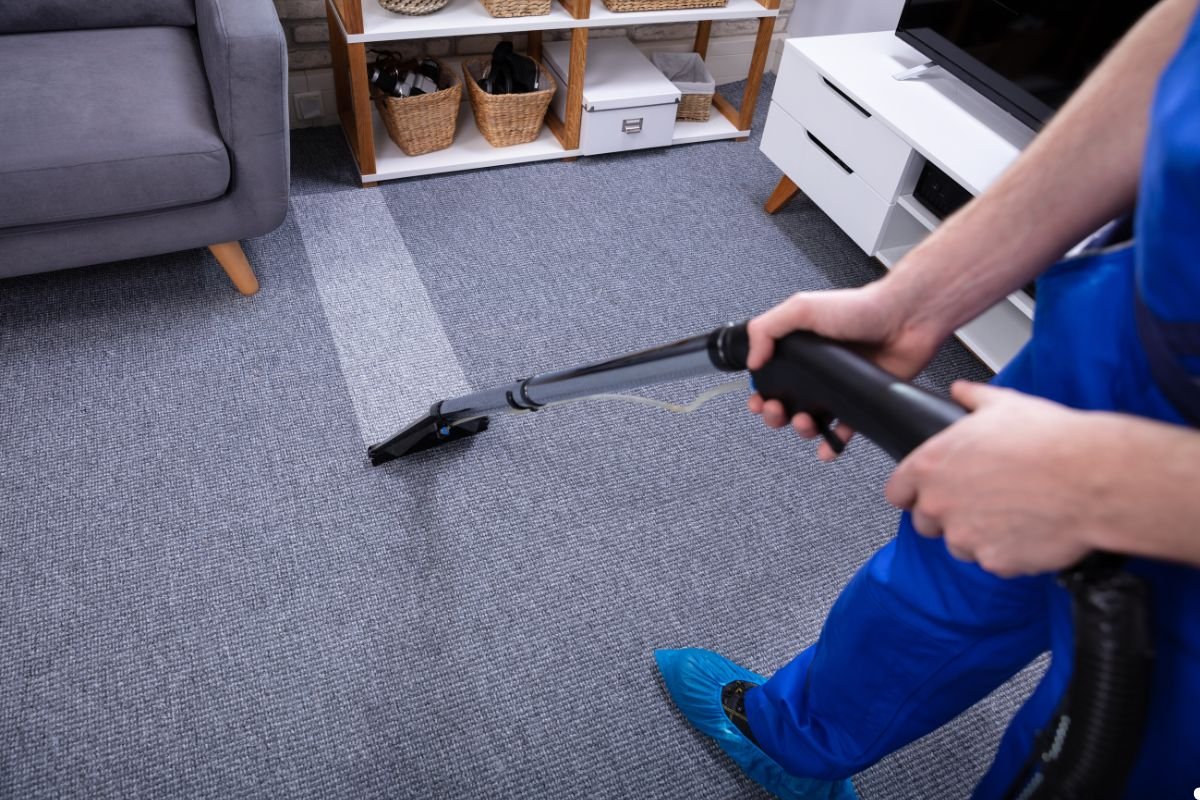
The million-dollar question after getting your carpets professionally cleaned: when can I finally walk on them again? Generally, expect carpets to dry within 2 to 24 hours. However, this range varies widely depending on several factors, which we’ll explore in detail below. Understanding these variables will help you manage your expectations and ensure your carpets dry properly, preventing potential issues like mold growth. For expert carpet cleaning and faster drying times, call us today!
The Common Question: When Can I Walk on My Carpet?
It’s completely understandable to be impatient after a carpet cleaning services. You’ve invested in getting your carpets fresh and clean, and you’re eager to get back to normal. The good news is, with the right knowledge and techniques, you can often speed up the drying process. However, rushing things can lead to problems, so it’s essential to understand what influences drying time.
Factors Affecting Drying Time
Drying time isn’t a one-size-fits-all answer. Several factors play a role, and being aware of them is key to a successful carpet cleaning experience.
Cleaning Method Matters
Different carpet cleaning methods use varying amounts of water, directly affecting drying time. Here’s a quick overview:
- Steam Cleaning (Hot Water Extraction): This method uses hot water and powerful extraction to remove dirt and grime. It generally requires the longest drying time, typically 6-12 hours, but can sometimes extend to 24 hours or more, especially if excess water is used.
- Dry Cleaning: This method uses very little water, relying on chemical cleaning products and specialized equipment. Carpets cleaned this way can dry in as little as 2-6 hours.
- Encapsulation: This method uses polymers that encapsulate dirt particles, which are then vacuumed away. Drying times are typically 2-6 hours.

Humidity Levels
Humidity plays a significant role. In areas with high humidity, like coastal regions, carpets will naturally take longer to dry. Conversely, in drier climates, like parts of the Southwest, carpets tend to dry faster.
Airflow is Key
Proper ventilation is crucial for evaporating moisture. The more airflow, the faster your carpets will dry.
Carpet Type & Thickness
The type of carpet fiber and its thickness also influence drying time. Thicker carpets and those made of absorbent materials like wool will take longer to dry than thinner, synthetic carpets.
Amount of Moisture Used
Obviously, the more water used during the cleaning process, the longer it will take for the carpet to dry. A skilled technician will use the right amount of moisture to effectively clean without overwetting the carpet.
Tips for Faster Drying
Want to speed up the drying process? Here are some practical tips:
Increase Ventilation
Open windows and doors to create cross-ventilation. Use fans to circulate air and direct it across the carpet surface. This will significantly accelerate drying.
Use a Dehumidifier
A dehumidifier pulls moisture from the air, which can drastically reduce drying time, especially in humid environments.
Consider Professional Drying Equipment
Some professional carpet cleaners have specialized drying equipment, such as high-powered air movers, which can significantly reduce drying time.
What to Avoid
Certain mistakes can prolong drying time and potentially lead to issues like mold growth. Avoid these common pitfalls:
Closing Windows & Doors
Restricting airflow is the biggest mistake you can make. Keep windows and doors open to promote ventilation.
Walking on Wet Carpets
Minimize foot traffic on wet carpets to prevent re-soiling and potential damage. If you must walk on them, use clean socks or shoe covers. With our services, you can enjoy spotless carpets while we advise on the best practices to keep them looking fresh.
Typical Drying Timeframes
Here’s a general idea of what to expect:
- Short Drying Time (2-6 hours): Achieved with dry cleaning methods, low humidity, and good ventilation.
- Moderate Drying Time (6-12 hours): Typical for steam cleaning with moderate humidity and good airflow.
- Long Drying Time (12-24+ hours): Possible with thick carpets, high humidity, or excessive water usage during cleaning.

When to Call a Professional
If your carpets are taking an excessively long time to dry, or if you notice a musty odor, it’s time to call a professional. Prolonged dampness can lead to mold growth, which poses a health risk. A professional can assess the situation, identify the cause of the problem, and take corrective action.
Enjoying Your Freshly Cleaned Carpets
With the right knowledge and techniques, you can ensure your carpets dry quickly and properly after cleaning. By understanding the factors that influence drying time and following our tips, you can minimize downtime and enjoy your freshly cleaned carpets sooner. Call us to schedule your carpet cleaning service today!
FAQs
How long should I wait before putting furniture back on the carpet?
Wait until the carpet is completely dry before placing furniture back. Use protective pads under furniture legs to prevent indentations.
Is it normal for my carpet to smell after cleaning?
A slight odor is normal, but it should dissipate within a few hours. If the smell persists or is musty, it could indicate mold growth.
Can I use a regular fan to dry my carpet?
Yes, a regular fan can help circulate air and speed up drying. Place the fan so that it blows across the carpet surface.
What happens if my carpet stays wet for too long?
Prolonged dampness can lead to mold growth, which can cause health problems and damage your carpet. Protect your health and home from mold damage—act now! Contact us today for expert carpet cleaning and moisture control.

